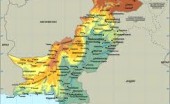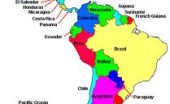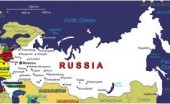Re Ian Bremmer 'Could third-party candidates upend the 2024 US election?' 3 April The current political movement in the USA…
China: economy, government, governance
Written by Diana Thebaud Nicholson // March 20, 2024 // China, Economy // Comments Off on China: economy, government, governance
The Backstory: The Rise of China
(Foreign Affairs) The debate over how to approach China rages on in Washington. The Biden administration has imposed waves of trade restrictions on Beijing and moved to strengthen relationships with key allies in the Indo-Pacific, including Japan and the Philippines. But policymakers on the right are calling for an even tougher approach. “A cold war is already being waged against the United States by China’s leaders,” write former Deputy National Security Adviser Matt Pottinger and U.S. Representative Mike Gallagher in a new essay for Foreign Affairs. “Rather than denying the existence of this struggle, Washington should own it and win it.” Even those who argue that the United States should do more to accommodate China can agree: Washington cannot afford to look away from Beijing.
This wasn’t always the case. Writing in 1993, the journalist Nicholas Kristof noted that the only group paying close attention to China’s trajectory was the business community. Meanwhile, he wrote, policymakers were “not giving adequate consideration to the colossal implications—economic, political, environmental and even military—of the rise of a powerful China.” (November/December 1993)
20 March
China’s economic slowdown is dragging down the rest of the world
Ian Bremmer asked economist and author Dambisa Moyo to grade the health of the global economy amid ongoing geopolitical crises and Europe and the Middle East, stalled Covid recovery, and a major economic slowdown in China. Her answer is more optimistic than you might expect, given so much uncertainty and volatility around the world. It’s true that the US economy has shown surprising resiliency, which is why the world avoided a global recession in 2023.
But China’s economic slowdown is still a significant drag on the overall global outlook. Structural issues within the Chinese economy–a collapsing real estate sector, high levels of local government debt, the flight of foreign investment–have a major impact on the world’s finances because of China’s role as the largest foreign direct investor to the developing world, as well many developed economies. But so far, the policy response from the central government has been relatively slow and piecemeal compared to expectations.
So China’s four decades of double-digit GDP growth over? And how do rising tensions between China and the West, mostly led by the US, impact that trajectory?
21 February
Red Sea crisis sees China’s brisk business in Africa waver under high shipping costs amid Houthi attacks
China has particular exposure to Africa, with investments reaching rising by 4.4 per cent to US$1.8 billion in the first half of 2023
26 January
Next China: Stock Market Meltdown
(Bloomberg) The new year has seen anxiety over China’s slowing economy flare spectacularly in its giant stock market, with Shanghai dethroned as Asia’s biggest equity market and Hong Kong, briefly overtaken by India as the world’s fourth-biggest bourse.
In all, three straight years of losses have wiped more than $6 trillion from the market value of Chinese and Hong Kong equities since a peak reached in 2021. … China’s equity market has more than 200 million retail investors, many of whom have traditionally looked to stocks and the property market as ways to grow their money amid rock-bottom savings rates — only to find their wealth shrinking from both.
That in turn is slamming consumer confidence and dragging significantly on the world’s second-biggest economy, a key engine for global growth.
17 January
China’s rulers reckon with troubling ‘headwinds’
China at Davos
(WaPo WorldView) Six years ago, Chinese President Xi Jinping made his last trip to Davos, Switzerland, to attend the annual conclave of global elites up in the mountains. The speech he delivered then to the gathered dignitaries and jet-setters at the World Economic Forum was striking for two reasons. …
This week offers a reminder of what has and has not changed. Trump’s emphatic victory in the Iowa caucuses underscored how large his shadow will loom over the United States and the world in the months to come. In Davos, a major delegation from China unnerved U.S. counterparts. Chinese Premier Li Qiang used his Tuesday plenary address to preach Beijing’s commitments to international comity and prosperity, stressing the need to keep global supply chains “stable and smooth.”
But now China’s position on the world stage is markedly different. Xi’s ruthless quashing of Hong Kong’s political freedoms focused attention on the intensifying authoritarian character of his regime. Thanks in part to Trump, it’s also become more commonplace for politicians in the West to sour on the entire project of globalization and specifically lament the ways in which Beijing manipulated the rules of the road to its advantage.
2023
Did Authoritarianism Cause China’s Economic Crisis?
(New Yorker) An erosion of trust between the government and its people now threatens the country’s decades-long boom.
China’s economy, the world’s second largest, is facing its most serious setback in a generation. During the past two years, economic growth appears to have been cut nearly in half. After emerging from the “zero COVID” policies that Xi Jinping, China’s leader, ordered early in the pandemic, the country now faces a real-estate crisis and faltering confidence from both its own citizens and overseas businesses. The problems have sparked debate among economists about whether Xi’s increasingly autocratic regime is to blame, and what a major slowdown could mean for the rest of the world.
To talk about China’s economy and the possible causes of its malaise, I recently spoke by phone with the economist Eswar Prasad: a professor at Cornell University and a senior fellow at the Brookings Institution, an expert on the Chinese economy, and the author of “The Future of Money.” During our conversation, which has been edited for length and clarity, we discussed why Xi may be hesitant to implement significant economic reforms, how serious a threat a crashing Chinese economy is to the rest of the world, and the lasting impact of China’s pandemic policies. (7 September 2023)
6 December
Ian Bremmer: The dismal state of global affairs
China’s economic challenges
The China “growth engine” no longer works the way it used to.
Youth unemployment stands at record highs. Manufacturing activity is contracting. The property sector is in serious trouble. Exports have declined on the back of inflation and historically high interest rates in the US and Europe. Foreign investment into China has turned negative for the first time since we’ve measured it. Property prices are declining, household wealth is contracting, and borrowers are no longer willing to underwrite property construction. Developers and lenders are defaulting. Revenues for local governments are drying up just as their debt servicing costs are rising. Domestic demand is stagnant, consumer sentiment is down, and growth is slowing.
China’s government response has been limited and incremental. Large-scale bailouts for distressed developers, shadow banks, and local governments are off the table for now. Headline growth may well come in at 5% this year, but the economy faces deflation caused by persistently weak consumer spending, slowing private investment, overcapacity, and mounting financial stress. The IMF now expects the Chinese economy to grow under 4% a year for the coming years; absent reform, this number could go lower, especially in light of unfavorable demographics, chronically high debt, and intensifying geopolitical competition with the US and its allies.
For the first time since the 1980s, the Chinese people fear that the next generation will not be better off than the present one. And the increasingly centralized, opaque, and capricious nature of Chinese policymaking – not to mention a series of disruptive policies such as tech crackdowns, the zero-COVID lockdowns and abrupt exit from them, and raids on foreign firms – has undermined the public’s confidence in Beijing’s ability to fix the problem.
The good news is that China remains a highly competitive economy, with an educated workforce, increasingly world-class infrastructure, and advantages in manufacturing, renewable energy, and electric vehicles as well as leading-edge innovation in frontier industries like advanced computing, AI, and biotechnology. China is also very politically stable, allowing President Xi Jinping to avoid the temptation to revert to unsustainable debt-fueled growth if he chooses. Only a systemic financial contagion or mass protests, neither of which looks likely in 2024, could force his hand. Instead, he will simply add stimulus at the margins and call on his people to persevere as they attempt to shift toward new drivers of growth.
The bad news is this means that Chinese growth is going to remain slower for longer, dragging down global growth with it. And the wrong policy choices could still leave China’s economy in a scenario of prolonged deflation, stagnant growth, and high indebtedness – much like what Japan experienced in the 1990s, but at a much lower level of development. That would be a massive problem for the world given China’s outsize role in the global economy.
3 November
Peak China: Why do China’s growth projections differ so much?
(Brookings) The expected summit between Presidents Joe Biden and Xi Jinping in San Francisco in November will feature an unusual backdrop: a Chinese economy in trouble and a U.S. economy that’s surprisingly resilient. But are China’s problems merely a slump, or signs of lasting decline? A wave of publications has already emerged on “Peak China” (here, here, and here) predicting that China will never overtake U.S. GDP, and may even stop growing altogether.
The inner workings of long-term projections are often obscure, but Roland Rajan and Alyssa Leng of the Lowy Institute offer a professional roadmap and help narrow the range of uncertainty. They start with a growth-accounting model for China with a 6% growth rate for real GDP, the pre-pandemic average, and then carefully estimate changes in the determinants of China’s growth in the years ahead.
2 November
Unraveling Xi Jinping’s call for ‘struggle’
(Brookings) As Beijing faces intensifying geostrategic headwinds and scrutiny of its great power ambitions, the concept of “douzheng”—which translates to both “struggle” and “fight” in English—has resurfaced in Chinese strategic discourse. “Struggling” has become a cornerstone of President Xi Jinping’s vision for achieving China’s “great rejuvenation” and was recently enshrined in the Chinese Communist Party constitution at the 20th Party Congress. The need to “struggle for a new era” has been invoked in numerous contexts, from campaigns to combat internal corruption to calls for Beijing to assert its interests abroad more forcefully.
… Beijing’s heightened sensitivity to perceived attacks on its core interests indeed raises the risk of conflict and necessitates greater vigilance by the United States and its allies to prevent escalation and manage crises with China. But Xi’s call for the party not just to “dare to struggle” but to “be good at struggling” also suggests that Beijing remains a rational actor that can assess its risks and shortcomings — that is, an actor that can be deterred.
In addition, simply reducing Xi’s douzheng to a directive for belligerence misses the larger picture. Douzheng embodies modern China’s aspirations and anxieties; it is an appeal to the Chinese people not to become complacent or to lose hope as difficulties mount at home and abroad, and to proactively work for the country’s “great rejuvenation.”
27 October
China’s Ex-Premier Li Keqiang, a Reformer Sidelined by Xi, Dies
Death comes months after he retired as nation’s No. 2 official
His decade steering economy overshadowed by Xi’s rising power
25 October
China takes on a trillion yuan debt
(GZERO) On Tuesday, China approved a 1 trillion yuan ($167 billion) increase in sovereign debt in a rare midyear budget reassessment as sluggish growth and local governments’ lopsided balance sheets pose major challenges for Beijing.
Half the money will be spent before the end of 2023, mostly on infrastructure projects related to flood mitigation and drainage. That might seem highly specific, and not necessarily the kind of investment that spurs economic growth, but it advances both the political and economic interests of Chinese President Xi Jinping, according to Lauren Gloudeman, Eurasia Group’s director for China.
Flooding hit China hard this year, particularly in the northeast, and cash-strapped local governments were on the hook for the damage, aggravating their extensive debt problems. The damage to agriculture also jeopardized China’s food security — a red line for Beijing — leading Xi to chair a Politburo Standing Committee meeting in August on flood control and reconstruction.
While the debt issuance is likely to help Beijing meet its growth targets, Gloudeman said the decision is not oriented toward kick-starting the economy per se.
24 October
China’s Demographic Achilles’ Heel
Yi Fuxian
American and Chinese policymakers have grown increasingly convinced that China will eventually overtake the US as the world’s largest economy, fueling expectations of an inevitable clash between the two rival powers. But these predictions fail to account for China’s rapidly aging population.
20 October
The political factors behind China’s disappearing leaders
By Mark Parker Young
(Atlantic Council) Chinese Communist Party (CCP) General Secretary Xi Jinping has shaken China’s military and foreign affairs establishments in the past two months by abruptly replacing several senior military officers and China’s minister of foreign affairs. The removals were all the more surprising because Xi had promoted many of these same officials to lead their organizations less than a year earlier. A close look at the officials involved suggests that a variety of personal and institutional factors contributed to their downfall, but the disruptive impact of the sudden disappearances indicates underlying mistakes and misjudgments on the part of Xi and the personnel apparatus he oversees.
The recent removals suggest that Xi has approved prosecutions of several discrete pockets of corruption and misconduct rather than a repeat of the sweeping and interconnected purges of his first term. The senior officials involved had crucial roles within their respective military and civilian bureaucracies, but none was part of Xi’s core apparatus of political control.
8 October
Has the Chinese economy hit the wall?
(East Asia Forum) After a strong start to 2023, Chinese economic activity has sharply fallen short of expectations. Exports have collapsed. Consumption, production and investment have slowed, while inflation levelled out and the unemployment rate edged up. The Chinese renminbi hit new lows in August and September 2023, driven by worries about the domestic economy.
… As always, there are cyclical and structural factors at play in the unfolding economic outlook. Among the cyclical factors are scars from the COVID-19 pandemic — deteriorating balance sheets, an ailing property sector and a limited macroeconomic policy response. Meanwhile, structural pressures are weighing on confidence as regulatory, security and political stability concerns continue to mount.
… There are also structural pressures on Chinese growth. Not least among them are regulatory actions that severely dampened business confidence, especially among technology companies and foreign-invested enterprises.
Some of these policies were implemented to address national security concerns, while others were attempts to deal with legitimate regulatory problems, such as consumer protection and fair competition. They reflect the increasing weight the government assigns to security issues and the costs it is willing to bear as a result.
The government has moved to offset some of these negative policy impacts. As a part of its broader policy mix, it has announced new policies aimed to shore up confidence and support private enterprise, foreign-invested firms and consumption. The government’s 31-point plan released in July 2023 highlights the importance of the private sector and fair competition, eliminating barriers to entry, protecting property rights and drawing private enterprises into national projects.
But the changing geopolitical environment weighs down on the economy. Both China and the United States are attaching growing importance to concerns about national security that impact trade and investment.
Given that both countries share similar concerns, though not necessarily identical definitions of political stability and national security, cooperation to address the challenges posed by globalisation is possible. Such cooperation first requires more dialogue. Conversation is valuable even — or especially — when the political terrain is rough.
Third parties can also play an important role in stabilising relations. The European Union’s ‘de-risking’ approach, even if just partial decoupling by another name, is a helpful example. In Asia, particularly with ASEAN, regional relations can play a stabilising role.
24 September
China’s big belt and road plans for Southeast Asia hit a 10-year speed bump as ‘political side effects’ mount (paywall)
Though belt and road projects have brought economic benefits, fears are growing that the gains will prove to be ‘marginal’ amid growing debt risks
Demand for infrastructure spending isn’t going away, analysts say – but the days of ‘paying lip service’ to local concerns in the region may be over
(SCMP) A decade on from its launch, China’s Belt and Road Initiative has not been the “transformational game changer” many in Southeast Asia were hoping for, analysts say, amid growing concerns over the “marginal dividends” and “political side effects” of engaging with Beijing’s multibillion-dollar connectivity push to grow global trade.
Chinese investments and construction contracts in the region – spanning Indonesia, Malaysia, Philippines, Singapore, Thailand, Vietnam, Cambodia, Laos, and Myanmar – peaked at around US$31.8 billion in 2018, a Maybank report released in March found.
Some of the better-known projects are a 1,035km high-speed railway in Laos that opened in 2021, the soon-to-open 142km Bandung-Jakarta high-speed railway in Indonesia and the 665km East Coast Rail Link project in Malaysia that is still under construction.
20 September
Xi’s Purge of Handpicked Ministers Shatters Stability Image
Chinese leader has ousted top officials with no explanation
Abrupt personnel moves have spooked investors and governments
(Bloomberg) After President Xi Jinping tore up the Communist Party rulebook to promote key loyalists last year, some observers expected his new team to operate more smoothly in tackling China’s biggest challenges.
Instead, his government looks like it’s in disarray. Xi’s mysterious purge of his foreign minister in July, followed by the reported ouster of his defense chief less than two months later, is making China appear unstable to the outside world. The Chinese leader also overhauled the generals overseeing China’s Rocket Force, which manages the nation’s nuclear arsenal, without giving an explanation.
While most analysts don’t see any threat to Xi, who has amassed more power than any leader since Mao Zedong, questions are being raised about his management style. Morale within the Foreign Ministry in particular is very low, with anxiety running high among a group of bureaucrats that see themselves as professional diplomats who don’t want to get caught up in political power plays, according to Chinese officials who asked not to be identified discussing sensitive information.
The upheaval is leaving investors and governments spooked, as outsiders try to piece together Xi’s motives from a slim trail of clues. It’s also undercutting Beijing’s efforts to convince the private sector it’s safe to invest in China, after years of bruising crackdowns on sectors including tech and education. Health-care tycoons have lost some $17 billion in Xi’s latest sweeping anti-graft campaign.
… Persistent tensions with the West — coupled with China’s economic slowdown — have sparked a $188 billion exodus from Chinese stocks and bonds from a December-2021 peak through the end of June this year.
15 September
China’s economy shows signs of stabilising but property slump threatens outlook



